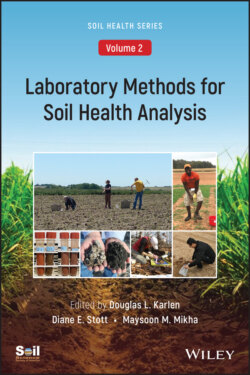Читать книгу Laboratory Methods for Soil Health Analysis, Volume 2 - Группа авторов - Страница 22
Sampling Considerations Sources of Error
ОглавлениеObtaining an accurate depiction soil health underscores the importance of minimizing errors during each step of an evaluation. Errors are cumulative, beginning with decisions made during site selection and ending with the interpretation of collected data (Fig. 2.1). Understanding error types associated with an evaluation can guide decisions to reduce their influence on observed outcomes (Dick et al., 1996).
Selection error is associated with the over or under sampling of areas, depths, and/or times needed to accurately represent a site (Fig. 2.1). Sources associated with this type of error (also referred to as sampling error) are well known (Das, 1950). This error can be minimized by using a sampling plan that accurately captures patterns of interest. Selection error can also be reduced by increasing the number of samples collected within or among subareas if using a stratified sampling approach (see below).
Figure 2.1 Error components associated with soil property assessment.
Processing error are errors made while collecting, handling, and preparing samples for evaluation (Fig. 2.1). Reducing this error requires consistent application of approved protocols tailored for the specific type of analyses, inclusive of storage conditions. Closely aligned with processing error is measurement error, which arises from an improper application of analytical methods or evaluation techniques. Consistent use of consensus protocols will ensure accuracy and precision of each measurement. For laboratory analyses, use of blanks, internal standards, and reference samples is necessary to detect potential contamination and bias.
Once data have been collected, interpretation error can further confound errors from site selection, sample processing, and measurement (Fig. 2.1). Interpretation error results from accidental or systematic misinterpretation or improper application of data. Reduction of interpretation error relies on the evaluator’s knowledge to accurately decipher data in context to the sampled site, while concurrently ensuring data outcomes are not extrapolated beyond inherent spatiotemporal constraints or methodological limitations.
